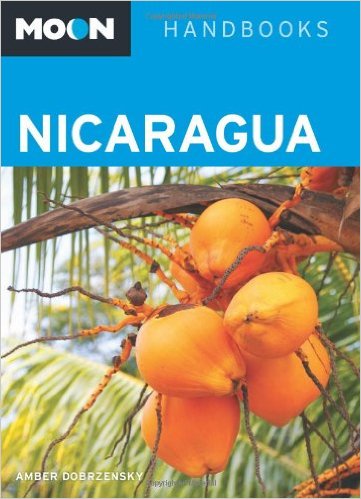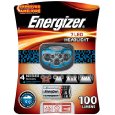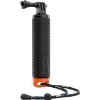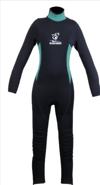Nicaragua is the largest country in Central America and it packs a punch when it comes to top-notch but relatively undiscovered attractions. One of the cheapest yet safest countries in the region to travel around, it has just as many natural wonders as its more famous neighbors to the south.
Tourism is rapidly growing, but much of Nicaragua’s beauty is still underrated and its attractions are not overcrowded. Despite its size, it’s simple to traverse the country’s landscapes via bus, and the locals are exceedingly friendly.
Poised to become an ecotourism giant in the region, this diverse nation features everything from celebrated surf to monumental volcano boarding with a backdrop of intense revolutionary history.
Nicaragua’s time is now!
Nicaragua has two distinct seasons. Most tourists choose to visit during the dry season, from November through May. However, temperatures can climb pretty high toward the later months of the dry season.
During the rainy season some roads can become impassable, but the Pacific coast receives considerably less rain than the Caribbean (which can see hurricanes in September and October), so some tourists prefer to brave the afternoon and nighttime showers from May to October in order to enjoy a lush, greener landscape.
Surfers also flock to the Pacific Coast during the rainy season for great swells. Temperatures are quite consistent throughout the country and the year and fall within the range of 12°-28°C, though highlands are always a bit colder than the humid lowlands.
Low Season
June — October
Average temperature
88-72 °F
31–22 °C
Average number of rainy days 10-22
High Season
November — May
Average temperature
90-70 °F
30–21 °C
Average number of rainy days 0–2
Average temperature
Average number of rainy days
The following links are affiliate links to Amazon.com or other local Amazon web stores - it depends on your location. The listed prices of all items are the US Amazon store prices at the time of publishing. If you are visiting us from outside the USA and there is an analogous item in your local Amazon web store, you'll be redirected there automatically. We do our best to keep all prices and descriptions up to date, but if you find any errors or inaccuracies, don't hesitate to contact us using our feedback page!
Recommended Travel Guides4
City walking11 items
Rich in history, Nicaragua has several great cities to stroll through. Many tourists leave the capital of Managua fairly quickly and head to one of the country’s two historic rival cities - leftist Leon or traditional Granada. Those looking for a hip, progressive vibe or to immerse themselves in the country’s tumultuous revolutionary history will enjoy Leon. Further to the south, Granada is known for its colorful colonial architecture and relaxed international vibe.
Those looking for some authentic souvenirs will appreciate the small town of Masaya, about an hour away from Granada and easily accessible by bus. Home to the country’s most celebrated indigenous market, travelers appreciate all the colorful wares and enjoy engaging in the traditional ritual of bargaining with locals.
Wherever you walk, remember that the Central American sun is stifling, especially during Nicaragua’s dry season, so wear sunscreen and bring a hat! If it’s the rainy season, bring along an umbrella for any afternoon or nighttime excursions.
-
Good daypack
-
Sunglasses
-
Face sunblock
-
Body sunblock
-
Hats
-
Camera (portraits and city views)
-
Portable battery charger (for your phone and camera)
-
Facial cleansing wipes
-
Baby powder (good for absorbing sweat in your face and neck)
-
Hand wipes
-
Travel umbrella
Beaching9 items
With two coasts, numerous islands, and gigantic lakes, Nicaragua is a veritable beachgoer’s paradise. Nightlife enthusiasts and surfers flock to San Juan del Sur, a sleepy fishing town turned into one of the country’s most popular spots. Another of the country’s most popular beaches is La Boquita, and it’s also one of the cleanest. Las Penitas and El Velero are popular due their proximity to the city of Leon, and the same goes for Montelimar and Managua.
Sea turtles can be spotted at Diriamba, and the Bluefields feature a unique culture and a picturesque lagoon. Turquoise waters and bright white sand characterize the Pearl Keys, a romantic chain of islands lying off the Caribbean coast. The double-volcano island of Ometepe, situated in the middle of Lake Nicaragua, has uncrowded but fantastic lake beaches with excellent views. Similarly, the deep crater lake Laguna de Apoyo, with its pristine nature reserve and sparkling sapphire waters, is considered one of the nation’s cleanest.
Regardless of which beach you’re on, remember that the sun is unforgiving in these parts, and sunscreen, a hat, and a beach umbrella are all recommended.
-
Body sunblock
-
Face sunblock
-
Sun oil
-
After sun care
-
Moisturizing spray
-
Sunglasses
-
Hats
-
Hand wipes
-
UV protection shirts
 O'Neill UV Sun Protection Men's Basic Skins Long Sleeve Crew Rashguard$24.14
O'Neill UV Sun Protection Men's Basic Skins Long Sleeve Crew Rashguard$24.14 O'Neill UV Sun Protection Men's Basic Skins Tee Rashguard$24.95
O'Neill UV Sun Protection Men's Basic Skins Tee Rashguard$24.95 O'Neill UV Sun Protection Women's Basic Skins Long-Sleeve Rashguard Top$17.96
O'Neill UV Sun Protection Women's Basic Skins Long-Sleeve Rashguard Top$17.96 O'Neill UV Sun Protection Women's Basic Skins Short-Sleeve Crew Rashguard Top$17.99
O'Neill UV Sun Protection Women's Basic Skins Short-Sleeve Crew Rashguard Top$17.99 Speedo Kid's UV Long Sleeve Sun Shirt$18.95
Speedo Kid's UV Long Sleeve Sun Shirt$18.95
Surfing10 items
Known worldwide for its surfing, the coasts of Nicaragua are great for both long-time wave riders and newbies alike. If you’re just learning how to surf, it’s best to go in the dry season when the sea isn’t as rough. If you’re a seasoned surfer, the Pacific coast rainy season swells are legendary.
Throughout the year, surfers flock to the party town of San Juan del Sur and the clear waters of Leon’s El Velero. Tough waves are abound in the two reefs characterizing Popoyo beach, and more affluent surfers love the waves and accommodations at Playa Colorado. Corinto is popular for windsurfing, another watersport that the country is known for.
Some of the more remote surfing spots in the country might not be near surf shops, so it’s always a good idea to bring your own equipment.
-
UV protection shirts
 O'Neill UV Sun Protection Men's Basic Skins Long Sleeve Crew Rashguard$24.14
O'Neill UV Sun Protection Men's Basic Skins Long Sleeve Crew Rashguard$24.14 O'Neill UV Sun Protection Men's Basic Skins Tee Rashguard$24.95
O'Neill UV Sun Protection Men's Basic Skins Tee Rashguard$24.95 O'Neill UV Sun Protection Women's Basic Skins Long-Sleeve Rashguard Top$17.96
O'Neill UV Sun Protection Women's Basic Skins Long-Sleeve Rashguard Top$17.96 O'Neill UV Sun Protection Women's Basic Skins Short-Sleeve Crew Rashguard Top$17.99
O'Neill UV Sun Protection Women's Basic Skins Short-Sleeve Crew Rashguard Top$17.99 -
Face sunblock
-
Body sunblock
-
Waterproof bandage
-
Antiseptic wipes (if you have some small wounds, scratches)
-
Universal injury relief ointment
-
After sun care
-
Quadcopter with camera
-
GoPro camera
-
Quadcopter for GoPro
Mount hiking21 items
With over 50 dormant or active volcanoes, these imposing giants are a huge part of Nicaragua’s awe-inspiring landscape. Some hiking favorites of varying difficulties are Volcan Masaya, San Cristobal, Mombacho, Concepcion and Maderas.
Volcan Masaya is one of the country’s most accessible and fascinating hikes. It is part of the Masaya Volcano National Park, which includes 2 volcanoes and 5 craters. Feared by both indigenous inhabitants and colonial conquistadors, hikers can witness how the frequent eruptions have affected the nature and wildlife in the area. The crater of Volcan Masaya is still smoking and smells of sulfur. Trails cost about $10-$20 in local currency to hike, but they only take about an hour or and hour and a half. The park also offers the unique option of a nighttime tour, which occurs every night from 5pm to around 8pm, as well as the chance to explore underground lava tunnels with flashlights!
Its proximity to Granada and cloud forest cloak make this volcano a prime destination for hikers. It has 4 craters all covered in cloud forest, so humidity is high and a sweater is recommended as it’s always windy. There are several endemic species to enjoy and because of the developed tourist infrastructure, you can even hire a truck for US$10-20 to bring you to the top. Even if you have your own car, you must still pay a comparable amount to drive it up there. Walking is cheaper, though prices vary depending on the specific trail you choose. The crater trail isn’t too difficult, but the other two trails are. El Tigrillo takes about 2 and a half hours, and El Puma needs 4 hours and you must hire a guide to hike it.
At 1745 m, Volcan San Cristobal is the country’s tallest and it features the most challenging hike. Around 7 or 8 hours total up steep, ashy slopes, this day-long hike demands a certain level of physical fitness and dedication. You can find guides in nearby cities like Leon and should be prepared to bring sunscreen, bug repellent, great sneakers, snacks and a lot of water. It’s hot, but many guides will actually recommend wearing light long sleeves and long pants due to the sun, the ash, and the bugs.
Two other difficult climbs are Concepcion and Maderas, the two volcanoes which make up much of the large Island of Ometepe which lies in the middle of Lake Nicaragua. For those who don’t want the challenge of the steep upper slopes, there is an option to hike to a lookout point 1000m up on Volcan Concepcion. This hike still isn’t easy per se, but it’s not exceedingly challenging and takes about 7 hours with breaks built in. Another easier hike is a waterfall hike on Volcan Maderas, to get to the lush San Ramon waterfall. Depending on how far you can drive up to and where you start, the hike can take between 1 and 4 hours. The crater hike for Concepcion takes 9-11 hours, and the one for Maderas (which is slightly less difficult, but still difficult) takes 7-9. For the hikes involving these two volcanoes, especially the crater hikes, it is recommended to bring the items listed above in the discussion of San Cristobal.
-
Good daypack
-
Good hiking boots
-
Jungle boots
-
Long hiking pants
-
Long sleeve shirt
-
Trekking socks
-
Jungle rain poncho
-
Torch and headlamp
-
Extra torch batteries
-
Softshell jacket
-
Anti leech socks (if rain season)
-
Face sunblock
-
Antiseptic wipes
-
Waterproof bandage
-
Lighter
-
Knife
-
Good binocular
-
Travel towel
-
Swimsuit
-
Light sleeping bag
-
First aid kit
Pack all the essentials and extra items you might need as in the jungle you cannot get any help, so it’s extremely important to be prepared.
Jungle trekking24 items
With rainforests and cloud forests scattered across remote landscapes, Nicaragua has some amazing trekking opportunities. Some of the most popular jungle hikes coincide with volcano treks, but Nicaragua has other worthwhile jungles to explore as well.
The Bosawas Biosphere Reserve in Jinotega is the country’s largest, and it features a lake with trails accessible for inexperienced or intermediate-level hikers. The Indio Maiz reserve is a quintessential swath of untamed wilderness, offering unparalleled opportunities to interact with the local indigenous people and view a wide array of flora and fauna. Finca Esperanza Verde is a noted destination which combines exotic fauna with ecological practices, and whose land contains many great trails. Lake Cocibolca has a “wild west” feel and is a great place for rugged hikes and treks on horseback.
Additionally, don’t forget that the rainforest is a huge ecosystem and every creature, even if it’s very tiny, can protect itself well! For example, leeches are not something you’d want to mess with. While leeches are not the absolute worst experience you could have, they’re still highly unpleasant.
Also, your typical hiking boots are not the best option in the tropical rainforest due its very high humidity. Since normal hiking boots are made of leather, some organisms could find them attractive and move in there. If this happens, then after only a few days of trekking, you’ll basically need to throw them away. When I was preparing for my first jungle experience, I searched far and wide to find the type of boots which would be the best for me. Then, I recalled that the US army had created jungle boots specifically for its soldiers when there was a war in Vietnam. I googled this and ended up buying a pair of these boots. After I did few treks in them, I realized that I had made a very smart choice. The boots are made with an artificial fabric and materials which get dry much quicker than normal hiking boots (which is ideal, considering humidity). They also have very good ankle support and they are tall, so you can wear your leech socks and you won’t be afraid of getting bitten. But of course, light trekking boots with synthetic material would be also a good option, especially if the trek is short.
Other items mentioned below are also musts for jungle trekking. Garbage bags, for example, could be very useful when you have a boat ride somewhere in the depths of the jungle, or if you go during the rainy season. If you put all your bags in separate garbage bags and seal them with a sealing tape, it keeps them from getting wet if it’s raining. I usually use 2-3 garbage bags for each of my bags - a solution which costs much less than a raincover for your bags. Additionally, considering how heavy the rain in the jungles can be, a raincover won’t really help you at all!
-
Good daypack
-
Waterproof bag (might be even better option for rainy season)
-
Anti leech socks (extremely important for rainy season)
-
Jungle boots
-
Light hiking boots
-
Long hiking pants
-
Jungle rain poncho
-
Waterproof bags for camera and documents
-
Good binocular
-
Whistle
-
Torch and headlamp
-
Extra torch batteries
-
Lighter
-
Jungle knife
-
Sealing tape
-
Plastic bags
-
Rope
-
Adjustment to vertical peeing for girls
-
GoPro camera
-
Insect head hat
-
High DEET insect repellent
-
Antiseptic wipes
-
Universal injury relief ointment
-
Waterproof bandage
Snorkeling6 items
The rich seas of Nicaragua are popular for both snorkeling and diving. The ubiquitous destination for all things beach-related, San Juan del Sur is also good for snorkeling. Its waters are warm all year round, but due to its rough surf, the best snorkeling is always further out from shore. While it might be hard to find a boat out there, snorkelers can inquire at dive shops. The most popular beach for snorkeling in the area is La Flor, where those lucky enough can witness sea turtles hatching or swimming in the clear waters.
Once a remote secret, the Corn Islands (Big Corn and Little Corn) are heavily gaining traction as one of the country’s best gems. North of the Bluefields, these Caribbean paradises are worth the trip, especially if you just fly to Big Corn from Managua. Surrounded by a barrier reef, the quantity of colorful wildlife swimming about near the islands is unparalleled in the region. Snorkeling tours are easy to find on the island, and they’re quite cheap as well.
-
Snorkeling set: fins, mask, tube
-
UV protection shirts
 O'Neill UV Sun Protection Men's Basic Skins Long Sleeve Crew Rashguard$24.14
O'Neill UV Sun Protection Men's Basic Skins Long Sleeve Crew Rashguard$24.14 O'Neill UV Sun Protection Men's Basic Skins Tee Rashguard$24.95
O'Neill UV Sun Protection Men's Basic Skins Tee Rashguard$24.95 O'Neill UV Sun Protection Women's Basic Skins Long-Sleeve Rashguard Top$17.96
O'Neill UV Sun Protection Women's Basic Skins Long-Sleeve Rashguard Top$17.96 O'Neill UV Sun Protection Women's Basic Skins Short-Sleeve Crew Rashguard Top$17.99
O'Neill UV Sun Protection Women's Basic Skins Short-Sleeve Crew Rashguard Top$17.99 Speedo Kid's UV Long Sleeve Sun Shirt$18.95
Speedo Kid's UV Long Sleeve Sun Shirt$18.95 -
GoPro camera
-
GoPro LCD display
-
Hand buoy
-
Anti fog pads
Scuba diving7 item
Like snorkeling, San Juan del Sur is also good for diving. While there is a shop that can arrange excursions and rent out equipment, it’s always recommended to bring you own. The Corn Islands are ideal for first-time divers, as it is possible to complete a course in just 3 or 4 days - and the beautiful reefs you’ll get to explore after becoming a certified diver are a fantastic reward!
There are several dive shops and centers scattered throughout the Corn Islands, and diving excursions can be booked through them. Highlights include diving around the famous Blowing Rock, a vertical wonder teeming with marine life that stretches from ocean floor to the surface. Tropical fish are abundant here, and it’s even possible to see sharks and barracudas.
-
Diving wetsuit
-
Snorkeling set: fins, mask, tube
-
GoPro camera
-
GoPro LCD display
-
Red filter (essential for deep blue water)
-
Hand buoy
-
Anti fog pads
Sandboarding13 items
Sandboarding, also known as volcano boarding since it’s mainly on ash rather than dunes, is an adventure-lovers’ sport that can only be found in select locations around the world - and Nicaragua is one of them! The most popular destination for this is the Cerro Negro volcano near the city of Leon. One of the volcano’s sides is too steep to hike up, but that makes it perfect for boarding down!
While experienced snowboarders or skateboarders may be able to procure a board and do this on their own, for most people it’s a good idea to find a guide or tour operator from the city of Leon, to make sure that your first sandboarding experience is safe and enjoyable. For those who aren’t inclined to stand while going down, it is also possible to descend the mountain sitting down on a wooden sled. It’s an experience that gives you adrenaline, awesome vistas, and all the fun of winter sports but without the cold. You’ve got to try it!
-
Good daypack
-
Face sunblock
-
Body sunblock
-
Antiseptic wipes (if you have some small wounds, scratches)
-
Water bottle
-
Long hiking pants
-
Long sleeve shirt
-
Outdoor sunglasses
-
Helmet
-
GoPro camera
-
GoPro Head Mount
-
GoPro chest mount
-
GoPro Helmet Front Mount
Meeting locals3 items
Nicaraguans are known for their friendliness, and Nicaraguan culture is a blend of Spanish, African, English, and indigenous influences. Nearly 9% of the country identifies as one of various indigenous groups, including the Rama - called the Guardians of the Forest who inhabit the Indio Maiz Biological Reserve, the Mayagnas, and the Miskitos who live in remote Autonomous Regions of the Caribbean Coast.
Some communities, such as one in El Chile, can be visited and you can learn about traditional art and ways of life. Tourists also enjoy hiking through large coffee farms, since coffee production is a major part of Nicaragua and many peoples’ lives.
-
Good camera (portraits, object, landscapes)
-
"Polaroid"-type camera
Polaroid-type camera makes immediate pictures to present them as well. This camera is small, relatively cheap and allows you to produce photos immediately. One of the greatest options is by Fuji, as they recently issued a very good Instax model for shooting and getting images immediately.
-
Small presents
Vaсcination5 items
Make sure you are up-to-date on routine vaccines before every trip. These vaccines include the measles-mumps-rubella (MMR) vaccine, diphtheria-tetanus-pertussis vaccine, varicella (chickenpox) vaccine, polio vaccine, and your yearly flu shot. The following vaccination recommendations are taken from the Centers for Disease Control and Prevention (CDC) webpage.
Hepatitis A
Typhoid
Hepatitis B
Malaria
Rabies
First Aid Kit6 items
Nicaragua is a country where you can have some qualified help. However, in some remote areas it will take a while to get proper treatment. Sometimes, not you but some of your traveling buddies might need help. Make sure you have something in advance against the following symptoms:
Wounds, traumas, cuts
Gastro problems like poisoning or heartburn
Allergic reactions on sun burn, bites of insects, unusual food
Fever and cold
Motion sickness
Strong painkillers

































































































Like this packing list
Like VacayKit